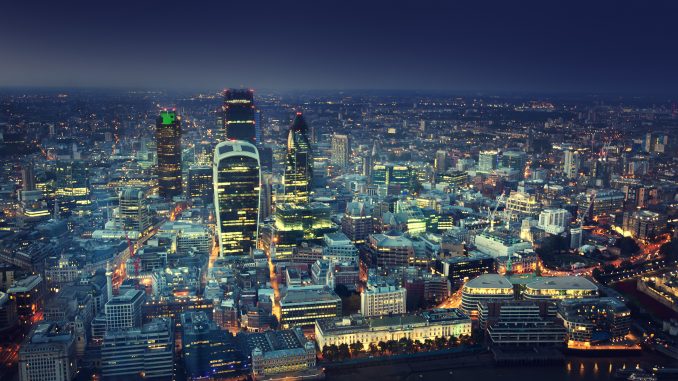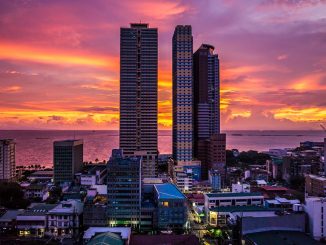
Asia and the Middle East dominate authoritatively the top of the world’s largest cities, ranked according to the number of inhabitants they have, irrespective of their size.
Industrialization and the technological revolution have resulted in an accelerated increase in the number of inhabitants of the world’s cities, as people have left their homes in the countryside for a better and more extravagant life.
In addition, increasing birth rates in many regions of the world, but especially in China, India and most African countries, has also led to an increase in urban agglomerations. Therefore, all of the world’s top ten cities have more than 20 million people!
- Sao Paulo (Brazil) – 20.9 million
Sao Paulo is the most developed city in the southern hemisphere. Founded in 1554 by Portuguese colonists, Sao Paulo has now become a multicultural city that hosts a significant number of Italians, Japanese and Arabs. The city has some of the tallest buildings in Brazil and is home to famous museums such as the Latino-American Memorial, the Museum of Art or the Portuguese Language Museum.
- Lagos (Nigeria) – 21 million
Set on the shore of the South Atlantic in the Gulf of Guinea, Lagos is the most developed city in Africa and one of the continent’s most important financial centers. Initially, Lagos was a simple port and its extension was difficult, as the region is marked by many islets that have been gradually coopted in the metropolitan area of the city. However, this geographical arrangement makes Lagos now perceived as an agglomeration of smaller cities.
- Beijing (China) – 21.1 million
The capital of China is located in the northern part of the country and is well-known, among other things, for its palaces, gardens and temples, but also for the Great Wall of China (not seen from space, contrary to what many people believe). The population density reaches 1300 inhabitants per square kilometer but not everyone enjoys the same status: only 13 million inhabitants have permanent residence in Beijing.
- Mexico City (Mexico) – 21.3 million
Mexico City has a special status. We know for sure that it is the most populated city in North America, but this term is not exactly true: in fact, Mexico City is made up of the city itself and 41 municipalities. Situated in the Mexican Valley, at an average altitude of 2241 meters, the city is not exactly friendly in terms of weather. In addition, it is surrounded by mountains, which is why air pollution rates are very high.
- Delhi (India) – 21.8 million
Delhi is a city with a special history. Throughout the ages, it was the capital of many empires, which meant that it was destroyed and rebuilt periodically, especially during the medieval times. At present, Delhi is practically a city made up of several cities in the metropolitan area, and in 2014 it was declared the most polluted city in the world. The local economy is based on IT, telecommunications, tourism and banks.
- Guangzhou (China) – 23.9 million people
Guangzhou is also known as Canton and is one of the largest ports in the world. Obviously, the economy relies heavily on port activities, but there is also an economic and technological development center, but also a so-called “city of science” where authorities seek to attract researchers.
- Karachi (Pakistan) – 24 million people
Despite the difficulties in recent years, especially political ones faced by Pakistan, it is one of the largest cities in the world. Karachi was the capital of the state before the construction of Islamabad, and is currently home to most local companies. Situated on the shores of the Arabian Sea, Karachi has many beaches as tourist attractions, beside museums, historic buildings, National Park or National Lake. As in many other cases of crowded metropolis, Karachi has plenty of problems due to pollution.
- Shanghai (China) – 24.8 million people
Located in the Yanghtze River Delta, Shanghai is China’s largest city, it has the largest port in the world and is a major tourist attraction thanks to its numerous museums, such as Shanghai Museum or China’s Art Museum, and it also hosts many emblematic skyscrapers. The city has grown significantly over the last 20 years and has become China’s financial and commercial center.
- Seoul (South Korea) – 25.6 million
Nearly half of the South Korean population lives in Seoul, a surprising statistic even for one of the most populated cities in the world. But the city covers only 12% of the country’s surface, so the population density is very high. The city is divided into 25 districts and has one of the world’s longest tunnels in its metro network. This is the city where companies such as Samsung, LG or Hyundai are headquartered.
- Tokyo (Japan) – 36.9 million
The largest city in the world in terms of the number of inhabitants is Tokyo. With a larger population than Canada or, why not, Romania, Tokyo is also the city with the largest economy in the world. Tourist attractions here include the National Museum, the Imperial Palace or the Senso-Ji Temple. The city offers many other tourist opportunities and has two major airports.
Conclusions
The largest urban cities are capable of accommodating more than 20 million inhabitants today, also taking into account metropolitan areas. In most cases, we are talking about cities with rapid and aggressive development, which has generated a major attraction for the country’s inhabitants, as well as cities whose existence extends over several thousand years.
This rapid expansion has also often led to environmental problems caused by geographical location and the high number of factories and cars. In fact, the management of such giant cities is one of the main challenges of the 21st century, especially as in many of them the population is growing.



Be the first to comment